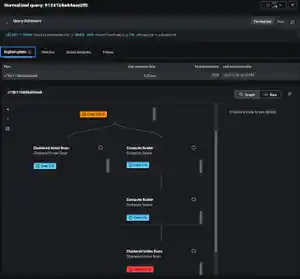Simplify Observability with New AI Insights and Unified Enhancements from AppDynamics
You know that feeling when everything looks fine—until it isn’t? The dashboards are green, the alerts are quiet, and then suddenly something breaks, and you’re left piecing together fragments from a dozen systems to figure out why.
We’ve all been there. Modern systems are powerful, distributed, and, let’s be honest, a little bit chaotic. Observability has never been more critical—or more complex. But here’s the good news: the latest AppDynamics release is designed to make it all feel a lot more human. It’s about clarity, context, and confidence. About seeing what matters, understanding why it happened, and acting before your customers even notice.
This release centers on three big themes that tie everything together: Agentic Observability, Observability for AI Applications, and a Unified Observability Experience.
Let’s unpack what that really means.
1. Agentic Observability: When AI Doesn’t Just Detect Problems—It Explains Them

Figure 1: AI Troubleshooting Agent explains what happened, why it happened and suggests paths to remediation
Anomaly alerts are helpful. But they can also be cryptic. You get a notification that something’s off—great. But now what?
That’s where the new AI Troubleshooting Agent for Business Transaction & Database Anomalies comes in. It’s like having a seasoned engineer sitting next to you, explaining what probably happened, why and what you can do about it. Built on AppDynamics’ existing topology-based Root Cause Analysis, this AI-powered feature takes anomaly detection several steps further.
Here’s how it works: when an anomaly appears—say, a slowdown in a key business transaction—the system doesn’t just flag it. It analyzes RCA results, performance metrics, and snapshots to produce a contextual summary that reads almost like a colleague wrote it. You’ll see the suspected cause, the likely impact, and clear recommendations for what to do next.
It’s the kind of troubleshooting that feels intuitive because it’s presented in natural language, not just graphs and error codes.
And honestly, that’s a big deal. Teams can now move from “What’s happening?” to “Here’s how we fix it.” It reduces mean time to detection and resolution, improves collaboration across technical and non-technical teams, and boosts confidence that the problem you just fixed… actually stays fixed.
You could say it’s observability with a bit of emotional intelligence—AI that speaks human.
2. Observability for AI Applications: Making the Invisible, Visible

Figure 2: Observe the cost and performance of LLM applications and infrastructure with this new end-to-end dashboard
AI applications are booming. From chatbots and copilots to custom internal agents, everyone’s building something that depends on large language models. But here’s the thing: these models are black boxes. They’re powerful, but their performance, cost, and reliability often live behind a curtain.
That’s where AI Agent Monitoring for LLM-Based Applications steps in.
This new capability gives you visibility into token usage, costs, and performance for LLM-based workloads—all in one unified view. Think of it as observability built specifically for AI applications. It brings together data from infrastructure, APIs, and application layers into one dashboard for holistic, end-to-end monitoring.
If you’ve ever wondered why your chatbot slowed down at 3 p.m. or why your monthly LLM bill suddenly spiked, this feature gives you the answers. You can track token consumption trends, correlate them with latency, and even identify which parts of your application are chewing through budget.
And let’s face it—AI is expensive. Without visibility, you’re flying blind. This feature helps teams optimize cost, improve performance, and build with confidence.
There’s a bigger point here too: as AI adoption accelerates, operational transparency becomes essential. You can’t manage what you can’t see—and this release makes sure you see everything that matters.
3. Unified Observability Experience: Because Everything’s Connected (Finally)
Now, let’s talk about the broader experience. Observability isn’t just about collecting data; it’s about connecting dots across teams, systems, and layers of the stack. The new AppDynamics release brings a set of capabilities that do exactly that—unifying the observability experience from end user to backend infrastructure and at parity with our other observability products.
Session Replay: Watching Real User Journeys

Figure 3: Troubleshoot difficult to reproduce problems with video replay of before, during and after problems occur
Imagine this: a customer reports an issue, but your logs look fine. You check metrics, traces, even screenshots, but you still can’t replicate the problem.
With Session Replay, you no longer have to guess. You can actually watch what the user did—the clicks, scrolls, and inputs—like watching a video playback of their session.
It’s a simple concept but incredibly powerful. Developers and UX teams can pinpoint the exact moment a user hit an error or got stuck in a confusing UI flow. Instead of debating what “probably happened,” you see it.
This doesn’t just speed up troubleshooting; it changes how teams collaborate. Developers, QA, and designers can all work from the same visual truth. It’s empathy meets engineering—watching the experience through your user’s eyes and fixing it faster than ever.
Native Kubernetes Health Rules and Alerting

Figure 4: Ingest, visualize and alert on native Kubernetes metrics like clusters, namespaces, workloads, and pods
Meanwhile, under the hood, things are getting smarter too. For teams running Kubernetes, the new Native Kubernetes Health Rules and Alerting feature is a huge leap forward.
Until now, Kubernetes monitoring often relied on older app/tier/node models that didn’t fully capture how these environments actually behave. This new feature preview ingests native Kubernetes metrics—covering clusters, namespaces, workloads, and pods—so you can define health rules and get alerts based on real entities.
That means you can track health across the hierarchy, explore metric trends over time, and even drill down to pinpoint root causes—all in one place.
In plain English: you’ll know exactly where things are going sideways, and you’ll know faster. The result? Better uptime, fewer false alarms, and happier teams.
Migration from On-Premises to Virtual Appliance: The Easy Button
The Splunk AppDynamics Virtual Appliance has come a long way to provide parity with our SaaS offering, including support for AI-powered anomaly detection/root cause analysis, application vulnerability and attack detection, and OpenTelemetry ingestion. Many of our existing on-premises customers are eager to take advantage of the new features as well as the improved scalability and maintenance of the virtual appliance and have been waiting for an easy path forward.
But, let’s be honest—migrations can be nerve-wracking. Nobody likes downtime, and manual data transfers can feel like performing open-heart surgery on your infrastructure.
That’s why the new Migration Tool for Virtual Appliance is such a relief. It automates backup and restore of all your critical configurations, minimizing downtime and manual effort.
In short, it lets existing AppDynamics on-premises customers move to the Virtual Appliance with confidence—and without losing any data. Once you’re there, you can immediately take advantage of newer features like anomaly detection, root cause analysis, vulnerability and attack detection from Secure Application, and OpenTelemetry ingestion.
You really can have your cake and eat it too.
Vulnerability Detection for .NET Framework

Figure 5: Microsoft customers can now gain insight into the vulnerability risk of their .NET Framework applications
Security teams have been asking for this one, and it’s finally here. The new Vulnerability Detection for .NET Framework extends protection to a wider range of .NET applications, using the same .NET agent you already rely on.
This matters for customers with large Microsoft-based estates—especially in sectors like government, education, and finance. It lets teams detect vulnerabilities inside libraries and frameworks that were previously invisible, giving them the same proactive visibility they’ve had for modern .NET Core and Java apps.
It’s integrated directly into Secure Application and available for both on-prem and SaaS environments. More coverage, less complexity, and peace of mind for critical systems that can’t afford surprises.
Cross-Application Business Transaction Correlation

Figure 6: Track business transactions across multiple applications without jumping through hoops
Now, here’s something that’ll make a lot of architects and performance engineers smile.
For years, tracing business transactions across multiple applications felt like detective work—lots of spreadsheets, manual stitching, and educated guesses. Not anymore.
The new Cross-Application Business Transaction (BT) Correlation connects transactions across application boundaries, giving you a single, continuous view of how a request moves through your ecosystem.
Instead of forcing all tiers into one giant application (a workaround many teams used), you can now expand flow maps to include interacting tiers from other apps. Breadcrumb navigation lets you move seamlessly between them.
The outcome? Faster troubleshooting, clearer visibility, and fewer silos between teams. It’s the kind of improvement that makes you wonder how you ever managed without it.
A Smarter, More Human Kind of Observability
Observability used to be about collecting as much data as possible. But data alone doesn’t solve problems—understanding does.
What this release represents is a shift from noise to narrative. From static dashboards to living context. Whether it’s AI explaining why a database spiked, a developer watching a user journey in real time, or an engineer setting smarter health rules for Kubernetes, everything points to the same idea: making complexity comprehensible.
And that’s what makes this moment exciting. As AI continues to reshape how we build, monitor, and secure systems, observability has to keep pace—not just technically, but emotionally. It has to think the way we think.
With these updates, AppDynamics is closing that gap—bringing intelligence, context, and clarity together in one place. Troubleshooting becomes storytelling. Monitoring becomes insight. And complexity starts to make sense again.
You know what? That’s what observability was always supposed to feel like.
Related Articles

What the North Pole Can Teach Us About Digital Resilience

The Next Step in your Metric Data Optimization Starts Now

How to Manage Planned Downtime the Right Way, with Synthetics

Smart Alerting for Reliable Synthetics: Tune for Signal, Not Noise

How To Choose the Best Synthetic Test Locations

Advanced Network Traffic Analysis with Splunk and Isovalent

Conquer Complexity, Accelerate Resolution with the AI Troubleshooting Agent in Splunk Observability Cloud

Instrument OpenTelemetry for Non-Kubernetes Environments in One Simple Step
